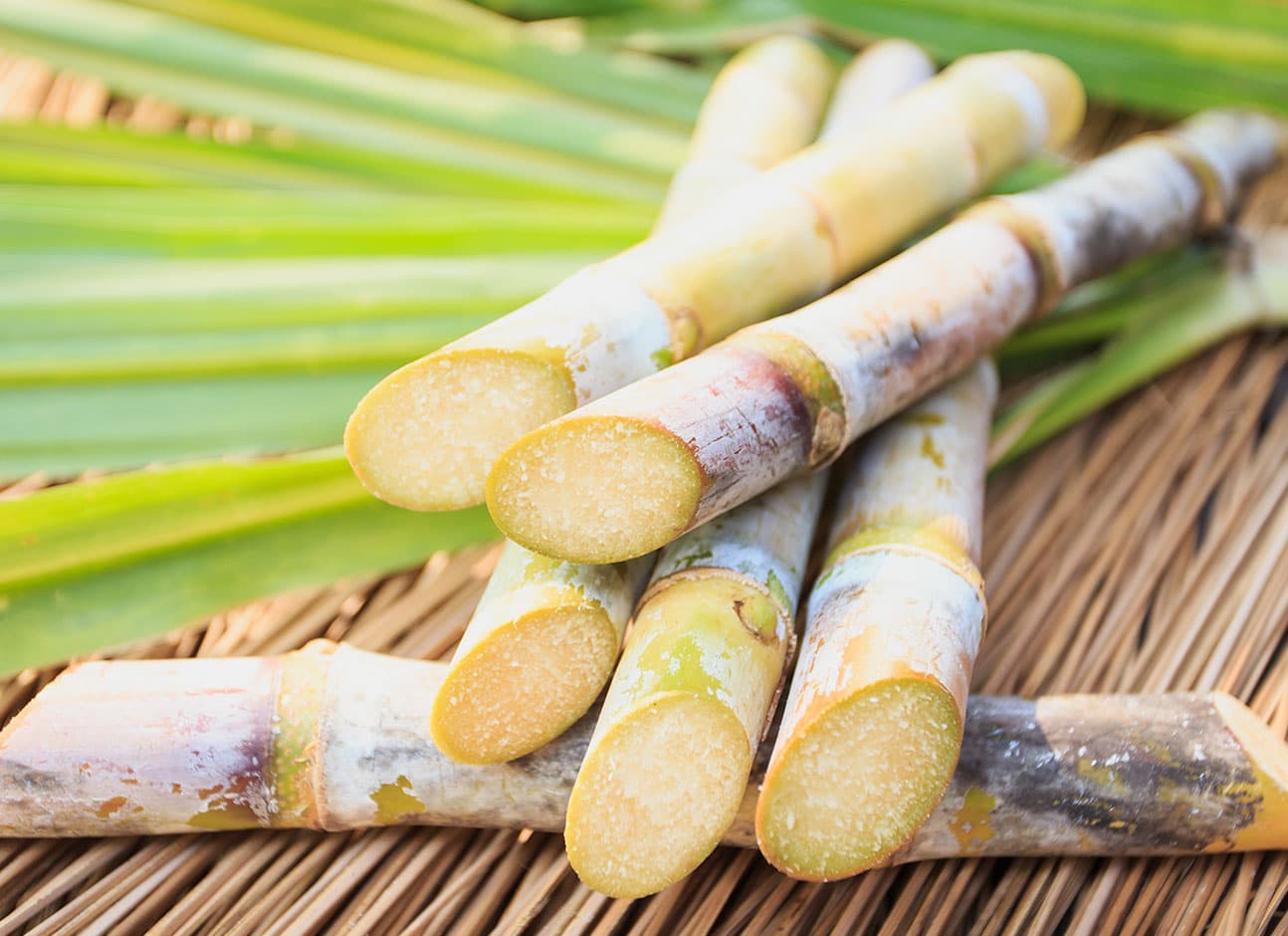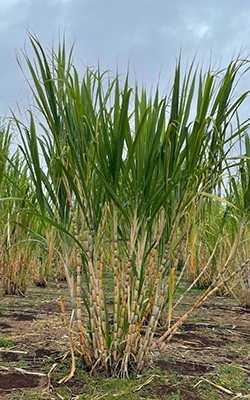Understanding Exactly How Sugar Canes Job: What Are Sugar Canes Made Use Of For in Food and Beyond?
Sugar canes are important to numerous aspects of both culinary and industrial practices. Their versatility allows them to be transformed into sugar, beverages, and also biofuels. As one discovers the trip from farming to processing, the varied applications of sugar canes disclose an intricate interaction in between farming and market. Nonetheless, the implications of sugar cane production expand past simple utility, questioning about environmental sustainability and financial influence.
The Background and Beginning of Sugar Canes
Typically taken for granted in contemporary diets, the history and origin of sugar walking canes reveal a complex journey that covers thousands of years. Belonging To Southeast Asia, sugar walking cane was very first grown around 8000 BCE, with its pleasant juice becoming very valued by very early worlds. By the very first millennium advertisement, it spread to India, where it was improved right into taken shape sugar, a noteworthy innovation that transformed its usage and trade. The introduction of sugar walking cane to the Mediterranean happened around the 7th century, many thanks to Arab traders, who identified its financial potential.During the Age of Exploration, European colonists established sugar plantations in the Caribbean, significantly impacting worldwide profession. By the 17th century, sugar came to be a staple asset, fueling economic climates and affecting social frameworks. The story of sugar canes is linked with agriculture, business, and cultural exchanges, noting its relevance fit contemporary cooking methods and economic systems.

Growing and Collecting Practices
The growing and harvesting of sugar canes involve several crucial methods that identify the top quality and yield of the plant - What Are Sugar Canes Used For. Crucial element consist of effective dirt prep work methods, specific planting approaches, and reliable collecting methods. Comprehending these methods is necessary for maximizing production and making sure sustainability in sugar walking cane farming
Soil Prep Work Strategies
Effective dirt preparation techniques are crucial for successful sugar cane growing, as they lay the structure for healthy development and optimal return. The process begins with soil screening to assess nutrient levels and pH equilibrium, permitting customized amendments. Tilling and plowing are after that used to damage and freshen the soil up compaction, enhancing root infiltration. Including raw material, such as compost or well-rotted manure, improves soil fertility and structure. In addition, appropriate drainage systems are crucial to avoid waterlogging, which can hinder cane advancement. Cover chopping might likewise be made use of to suppress weeds and improve dirt health and wellness. These methods collectively ensure that sugar walking cane has the ideal environment to prosper, bring about robust plant wellness and boosted productivity.
Growing and Growth
Effective planting and growth practices are vital for taking full advantage of the yield of sugar walking cane. The procedure begins with picking healthy seed walking canes, which are sections of fully grown stalks abundant in buds. These seed canes are usually grown in well-prepared dirt, preferably at a depth of 4 to 6 inches, making certain sufficient dampness and oygenation. Sugar cane thrives in warm environments with sufficient sunlight and requires constant irrigation, specifically throughout droughts. Fertilizing with nitrogen, potassium, and phosphorus is essential to promote durable development. Weed control is additionally vital, as competitors can impede advancement. Normal surveillance of plant wellness and soil conditions permits timely treatments, ultimately causing an effective plant that fulfills market needs.
Harvesting Approaches
Collecting sugar walking cane needs cautious preparation and implementation to ensure optimal yield and top quality. Typically, the harvest takes place when the cane reaches optimal sugar material, typically in between 12 to 18 months after planting. There are 2 key methods: guidebook and mechanical harvesting. Manual harvesting involves workers making use of machetes to reduce the stalks at ground degree, ensuring minimal damage to the plant and dirt. In contrast, mechanical harvesting utilizes specialized devices that cut, chop, and transport the cane, boosting performance and reducing labor costs. Nevertheless, mechanical techniques can lead to greater soil compaction and loss of nutrients. No matter the approach, prompt harvesting is necessary, as delays can result in decreased sugar top quality and raised vulnerability to bugs and illness.
Processing Techniques for Sugar Extraction
The processing of sugar walking cane is a critical stage in sugar manufacturing, encompassing numerous crucial techniques - What Are Sugar Canes Used For. Collected walking stick goes through juicing and squashing to extract its pleasant fluid. This juice after that proceeds via purification and formation, transforming it into the sugar most commonly utilized today
Harvesting Sugar Walking Cane
Sugar walking cane harvesting marks a crucial stage in the production process, where timing and technique play essential roles in optimizing yield. Usually, the harvest occurs when sugar content is at its peak, which varies based upon environment and growth conditions. Employees use customized equipment or manual devices to cut the walking cane at the base, ensuring minimal damage to the plant. Correct method is vital; reducing too expensive can decrease the top quality and quantity of the sugar removed later on. After cutting, the walking cane needs to be transported immediately to processing centers to prevent spoilage and sugar degradation. The efficiency of the harvesting process substantially influences the total efficiency and productivity of sugar cane farming, making it an essential emphasis for producers.
Crushing and Juicing
When sugar walking cane is harvested, the following crucial step entails juicing and crushing to draw out the wonderful liquid which contains sucrose. This procedure usually employs heavy equipment designed to squash the stalks, damaging down the coarse framework and launching the juice. Rollers or mills apply considerable pressure, allowing the walking article source stick juice to spurt while dividing the coarse deposit, referred to as bagasse. Once smashed, the cane is typically based on a collection of pressing stages to make best use of juice removal. The collected juice is abundant in sugar and may consist of impurities, which will be addressed in later handling steps. Generally, squashing and juicing are critical strategies that change collected sugar walking cane right into a liquid form appropriate for more improvement.
Filtration and Condensation
Filtration and crystallization are critical processes in changing raw walking stick juice into refined sugar. After drawing out juice from smashed sugar walking sticks, the fluid has contaminations such as plant proteins, minerals, and fibers. To attain filtration, the juice undergoes explanation, where warm and lime are included in speed up pollutants, which are then eliminated. The cleared up juice is after that focused with dissipation to create a thick syrup.Next, formation happens, where company website sugar crystals develop as the syrup cools down. This procedure usually entails seeding the syrup with existing sugar crystals to advertise uniform growth. The resulting crystals are divided from the continuing to be molasses with centrifugation, yielding pure sugar. This polished product is after that dried and packaged for numerous cooking uses.
Culinary Use Sugar Canes
While typically associated mainly with sweeteners, sugar canes offer a versatile variety of culinary applications beyond their role in sugar manufacturing. Fresh sugar walking cane can be juiced, yielding a sweet, invigorating drink appreciated in numerous tropical regions. This juice functions as a base for alcoholic drinks and shakes, including a special flavor profile.Additionally, sugar walking stick syrup, derived from steaming down the juice, is used as an all-natural sweetener in various dishes, from marinades to desserts. The syrup gives an abundant, caramel-like taste, boosting both savory and pleasant recipes.In some cuisines, sugar walking cane stalks are grilled or baked, providing a distinct smoky preference that enhances veggies and meats. Sugar walking stick can be included into desserts, such as sweets and puddings, where its sweet taste and fibrous structure produce wonderful contrasts. In general, sugar canes add to both traditional and innovative culinary developments throughout varied cultures.
Industrial Applications Past Food
Past their culinary uses, sugar canes play a significant role in different industrial applications, contributing to sectors such as bioenergy, paper production, and bioplastics. The coarse material of sugar walking stick is utilized in the manufacturing of biofuels, especially ethanol, which functions as a sustainable power resource that lowers dependancy on nonrenewable fuel sources. In the paper market, bagasse, the fibrous deposit left after juice removal, is refined into pulp for paper and cardboard manufacturing, advertising sustainable practices by using waste. In addition, improvements in bioplastic technology have led to the growth of eco-friendly plastics originated from sugar cane, providing an environmentally friendly choice to conventional petroleum-based plastics. These commercial applications moved here not only boost the value of sugar canes yet likewise line up with global activities in the direction of sustainability and sustainable sources, showing their adaptability past the kitchen.

The Environmental Influence of Sugar Walking Cane Manufacturing
The manufacturing of sugar walking stick, despite its various industrial benefits, postures substantial ecological difficulties. Deforestation is often a consequence, as huge locations of land are cleared to cultivate sugar walking stick, bring about environment loss and biodiversity decline. In addition, the extensive farming practices linked with sugar walking cane cultivation can cause dirt destruction and erosion. The hefty usage of fertilizers and chemicals to make the most of yields adds to water contamination, adversely influencing water ecosystems.Moreover, sugar cane production is connected to increased greenhouse gas exhausts, especially through land-use changes and the burning of walking cane areas prior to harvest. These techniques not just influence air top quality but additionally contribute considerably to climate modification. In addition, the water-intensive nature of sugar cane farming places tension on local water resources, influencing neighborhoods and environments reliant on these products. Dealing with these environmental influences is important for lasting sugar walking cane manufacturing in the future.
Frequently Asked Concerns
Are There Health Benefits Related To Consuming Sugar Walking Cane?
The concern of health benefits connected to sugar cane intake highlights potential benefits. Sugar cane may provide hydration, crucial minerals, and anti-oxidants, yet moderation is important due to its natural sugar material and feasible wellness implications.
How Does Sugar Walking Stick Contrast to Various Other Sugar Nutritionally?

Sugar cane provides natural sweet taste, primarily making up sucrose, while other sweeteners vary in structure and calorie content. Compared to fabricated alternatives, sugar cane gives vitamins and minerals, though it stays high in calories and carbohydrates.
Can Sugar Cane Be Grown in Non-Tropical Areas?
Sugar walking stick largely prospers in tropical climates, requiring bountiful rainfall and cozy temperatures. While some non-tropical areas attempt farming, success is limited due to insufficient heat and growing periods, making large production challenging.
What Are the Typical Parasites or Diseases Affecting Sugar Canes?
Typical pests impacting sugar walking canes include the sugarcane borer and aphids, while diseases like leaf scald and red rot present substantial threats. Effective monitoring methods are necessary for maintaining healthy and balanced sugar walking cane crops and maximizing yields.
How Does Sugar Cane Impact Resident Economies?
The influence of sugar walking cane on regional economies is substantial, providing job opportunity, improving farming industries, and contributing to exports. Its farming sustains local services and boosts community growth through enhanced revenue and framework improvements. Native to Southeast Asia, sugar cane was initial cultivated around 8000 BCE, with its sweet juice becoming very valued by very early civilizations. The intro of sugar walking stick to the Mediterranean took place around the 7th century, many thanks to Arab investors, who acknowledged its financial potential.During the Age of Expedition, European homesteaders developed sugar plantations in the Caribbean, considerably affecting international trade. The processing of sugar walking stick is a crucial phase in sugar production, encompassing several key techniques. While usually associated mainly with sweeteners, sugar walking sticks supply a versatile range of culinary applications beyond their duty in sugar production. The heavy use of fertilizers and chemicals to make best use of yields contributes to water pollution, detrimentally affecting aquatic ecosystems.Moreover, sugar walking stick production is linked to enhanced greenhouse gas exhausts, particularly with land-use changes and the burning of walking cane areas prior to harvest.